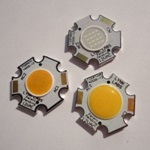- Exhibit Lighting
- Prism Original Series
- Lovo™ Edge Series
- LED Display Arm Lights
- LED Light Stands
- LED Flexible Strip Lighting
- LED Light Panels & Signage
- LED Down Lights
- High Bay LED Lighting
- LED Rigid Strip Lights
- LED Aluminium and Silcone Profile Extrusion
- Connectors & Cabling
- LED Accessories
- LED Controllers
- DMX LED Lighting
- MADRIX Lighting Control
- Programmable Lighting
- LED Lamps
- Power Supplies
- Battery Solutions
- Clearance
- More Lighting Options
- Commercial Lighting
- Retail Lighting
- Lovo™ LED Series
- What We Do
- Who We Are
- Resources

AC-LED TECHNOLOGY
Tuesday, February 19th, 2013
The concept of an AC LED is an elegant one. Because you can eliminate the AC-to-DC converter (the need for an external power supply in some cases) and several other electronic components that DC LEDs require, the electronics are simplified between the AC power source and the LED. Indeed, the AC-LED approach allows operation directly from line voltage or low-voltage AC supply.
There are essentially three flavors of AC LEDs on the market: low-voltage AC, high-voltage direct AC, and high-voltage rectified AC.
Low-voltage AC operates from 12V or 24V AC lines that have a magnetic or electronic transformer. Low-voltage AC is typically self-rectified from AC to DC. This is found in outdoor garden lighting, cove lighting and in linear retail lighting.
High-voltage AC (15-55V) uses a bridge-rectified topology where the LEDs are driven in a pulsed DC mode every half cycle.
With high-voltage rectified AC, some form of current-control circuitry is incorporated to keep the current from running too high during peaks in the voltage curve and doing damage to the LEDs.
AC-LED technology can be described as scalable because multiple AC LEDs can be run in series to match the line voltage level. Lighting applications requiring 12V to 277V AC can be accommodated in this way. In fact, AC LEDs can even be driven at resonance for maximum efficiency, which is not possible with DC.
What does AC LED mean?
It is important to note that AC LED is really a misnomer: LEDs are diodes with current flowing in one direction (as in direct current). However, with a so-called AC-LED scheme, LEDs can be connected directly to the mains power supply (typically 110V/60 Hz or 230V/50 Hz) and create light without the use of a typical driver (eliminating in some instances the use of an external or internal power supply).
For each half-cycle of the AC’s sinusoidal waveform, half of the LEDs emit light and half are dark; this is reversed during the next half-cycle. In this configuration, sometimes referred to as “true AC” or an antiparallel approach, a large number of LEDs in series can operate directly from line voltage.
However, this approach has produced LED “strings” with limited efficacy. Therefore, several years ago AC-LED suppliers including Lynk Labs of Elgin, IL, Seoul Semiconductor of Seoul, Korea, and Epistar of Hsinchu, Taiwan, began producing LEDs that operate directly from low to high AC voltages with simple control circuitry. This includes low-voltage direct AC to high-voltage rectified LEDs.
The LEDs typically accept between 12V on the low side on up to 240V today. One common design approach uses a series of LEDs to reach the 55V peak for the rising edge or trailing edge for the 110V line voltage, for instance. “This is really an AC implementation using a high-voltage architecture,” explained Brian Wilcox, vice president of Seoul Semiconductor, North America, a maker of AC and DC LEDs, assemblies and packages.
